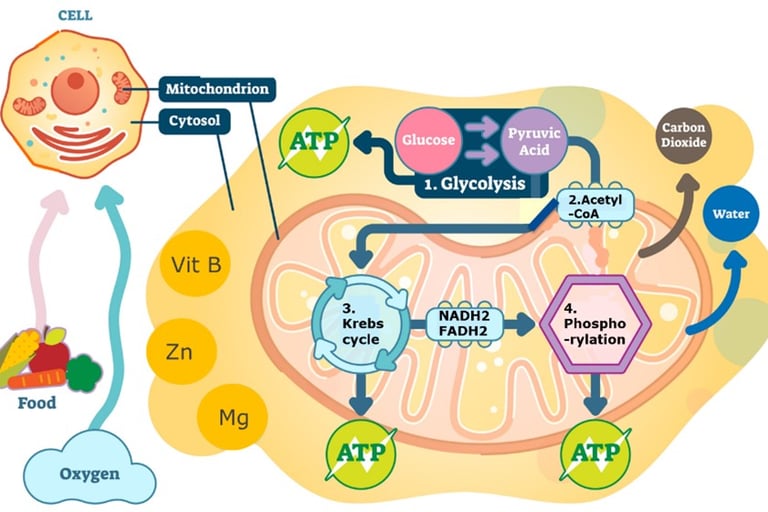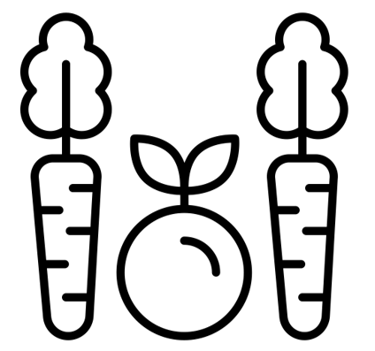Oxidation or glycation? My heart sways


Glycation of skin tissues promotes the formation of wrinkles. Glycation of ocular membranes promotes cataracts and macular degeneration. And so on. A good diet is the best protection against glycation, alongside adequate hydration, and regular exercise.
Oxidation is a more familiar phenomenon. You know, for example, that exposure to ultraviolet rays oxidizes our skin, contributing to its loss of elasticity. And you know about the existence of antioxidant molecules. But do you know when our bodies are most exposed to oxidation? Quite simply when we breathe, which is to say, all the time. To understand this, let's take a look at what is known as cellular respiration:
Under the effect of the oxygen we breathe, the glucose from the digestion of carbohydrates is converted to pyruvate in the cytosol of our cells. Pyruvate is then transformed into acetyl-CoA (acetyl cofactor A or "acetyl group") inside the mitochondria of these cells (small structures that act as energy plants). Note that acetyl-CoA can also come from the oxidation of lipids or proteins. The third stage is the "Krebs cycle": acetyl-CoA is oxidized to NADH2 and FADH2, molecules known as nicotinamide and flavin adenine dinucleotide. The fourth and final step is the conversion of NADH2 and FADH2 into ATP (adenosine triphosphate) molecules, water, carbon dioxide (CO2) and reactive oxygen species. It is ATP that provides our body with energy:
© VectorMine/stock.adobe.com
The issue is the production, in the last stage, of reactive oxygen molecules, i.e., oxidants. These molecules contain oxygen and are unstable, lacking an electron. To stabilize themselves, they take an electron from a neighboring molecule, rendering it unstable. In turn, this molecule takes an electron from a neighboring molecule, and so on. The result is a chain of oxidation, which can only be stopped by a molecule that remains stable even with an electron missing: an antioxidant.
Oxidation is a necessary chemical phenomenon. Without oxidation, there would be no energy production, as we've just seen, no oxidation of pathogens by our immune system, and no maturation of female oocytes to enable reproduction. Many things that benefit our organism require oxidation. The problem arises when there are too many oxidants compared to antioxidants. This can be due to a poor diet, the inflammation inherent in obesity, atmospheric pollution, UV rays, alcohol, tobacco, certain medications, lack of exercise or, conversely, intense sport, and so on. When this phenomenon, known as "oxidative stress", is present, sometimes irreversible damage occurs. Excessive oxidation of our DNA, for example, can lead to DNA mutations, which in turn can lead to cancer. Excessive oxidation of our body's proteins can lead to functional changes in our organism, resulting in degenerative diseases such as rheumatoid arthritis. And excessive oxidation of our body's lipids can lead to cardiovascular disease, notably via the formation of oxidized cholesterol, which causes inflammation in the vessels and arteries.
Very important: should you take antioxidant supplements in addition to your diet? Well, the answer is no! Every antioxidant becomes an oxidant if it is not quickly regenerated into its original form. What's more, taking too many antioxidants prevents the body from producing antioxidants, adapting to oxidative stress, and strengthening itself. It's far better to take antioxidants from the source, in our diet, where nature does its best to balance the various reactions. There's no need to fixate on a few reputedly healthy foods: a natural, diversified diet is what’s healthy.
To find out more, also read these articles:
On the links between cancer and diet: https://isabellemaesnutrition.com/en/cancer
On the importance of cooking methods and utensils: https://isabellemaesnutrition.com/en/cooking-utensils
On the issues of processed foods compared to a natural diet: https://isabellemaesnutrition.com/en/processed-foods
On the concept of glycemic index, its role and how to modulate it: https://isabellemaesnutrition.com/en/glycemic-index
BBQ picture by Z Grills Australia
In truth, my heart loves neither
What is it? Two phenomena that accelerate ageing and encourage the emergence of various pathologies.
Let's start with the lesser known of the two, glycation. Perhaps you've already heard of glycated hemoglobin, a measurement that can be made by blood analysis? Glycation is the binding of sugars to proteins. This phenomenon, which occurs in the body when we ingest proteins glycated following a thermal process or consume too many fast sugars, stiffens the proteins in our body, which make up most of our tissues. For example, it leads to the rigidification of arterial membranes, which can promote cardiovascular pathologies. Glycation of pancreatic tissues can lead to insulin resistance.


